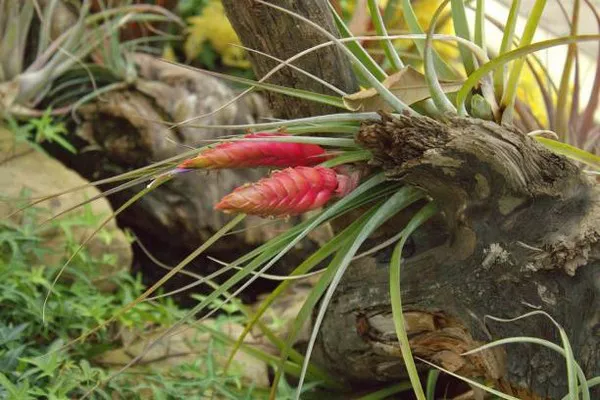Amidst the lush tapestry of the plant kingdom, air plants stand as remarkable anomalies, captivating enthusiasts and researchers alike with their unique characteristics and intriguing lifestyle. Epitomizing resilience and adaptability, these botanical wonders, scientifically known as Tillandsia, transcend traditional notions of plant life by defying the constraints of soil-bound existence. As horticultural enthusiasts and curious minds continue to explore the world of air plants, a fundamental question surfaces: How long can these ethereal organisms truly live?
Aerial Enigmas: Defying Conventional Plant Wisdom
Air plants are emblematic of the astounding biodiversity found across diverse ecosystems, from tropical rainforests to arid deserts. Unlike their terrestrial counterparts, air plants are devoid of the anchoring roots that typically tether plants to the ground. Instead, they secure their place in the world through a range of strategies, from gripping onto branches and rocks to utilizing the intricate web of crevices and structures offered by their environment. This unique adaptability fuels their ability to survive and even thrive in seemingly inhospitable habitats.
The Journey of a Lifetime: Varied Lifespans
The lifespan of air plants is a nuanced and multifaceted subject, governed by an interplay of factors that span genetics, environmental conditions, care practices, and reproductive strategies. While the longevity of air plants is influenced by these variables, the duration of their life can be broadly categorized into three distinct phases: establishment, growth, and reproductive senescence.
1. Establishment Phase: Setting the Stage
Upon finding a suitable niche within their chosen environment, air plants initiate a phase of establishment. During this period, the plant acclimates to its surroundings, develops a network of absorbing trichomes, and establishes the foundation for future growth. While the duration of this phase can vary, it generally spans several months, during which the plant adapts to its unique circumstances.
2. Growth Phase: Flourishing Amidst Challenges
The growth phase is characterized by the gradual expansion of the plant’s leaves, the development of vibrant colors, and the emergence of flower spikes that bear testament to the impending reproductive journey. Throughout this period, air plants exhibit remarkable resilience, adapting to fluctuations in light, humidity, and moisture availability. Some species of air plants can persist in the growth phase for several years, showcasing a remarkable ability to thrive amidst challenges.
3. Reproductive Senescence: A Farewell to Bloom
As air plants reach maturity, they channel their energy toward reproduction, producing stunning blooms and, subsequently, seeds. The process of flowering is a culmination of their life’s effort, often marking the beginning of a shift towards the final phase of their existence. Following the flowering stage, some air plants may gradually enter a phase of senescence, characterized by a decline in vitality and eventual fading away. However, this phase is far from uniform, with some species displaying the ability to produce offsets or “pups” – small, genetically identical plants – that ensure the legacy of the parent plant lives on.
Factors That Influence Lifespan
While the aforementioned phases provide a general overview, it is crucial to recognize that the lifespan of air plants is profoundly influenced by a constellation of factors:
1. Species and Genetics: Different species of air plants exhibit varying lifespans. Some species are short-lived, while others can persist for several decades.
2. Environmental Conditions: Light, humidity, temperature, and air circulation play pivotal roles in determining the longevity of air plants. Properly providing for these needs can extend the plant’s life.
3. Care Practices: Regular misting, soaking, and appropriate fertilization contribute to the overall health of air plants. Neglect or improper care can hasten senescence.
4. Reproductive Efforts: The act of flowering and producing seeds requires significant energy expenditure. Some air plants may enter a senescent phase after reproduction, while others continue to thrive.
5. Reproduction Through Offsets: Air plants that produce offsets or “pups” have the potential to perpetuate their genetic lineage, influencing their lifespan positively.
The Enchanting Legacy: A Complex Story of Resilience
As we delve into the world of air plants, it becomes clear that their lifespan is not merely a chronological countdown but a complex interplay of biology, environment, and care. Each air plant’s journey is a unique story of resilience, adaptability, and the remarkable ability to flourish in the face of adversity. From the ephemeral beauty of a flowering moment to the enduring legacy of offsets, air plants remind us that the timeline of life can be as enchanting as the plants themselves.
As we continue to unravel the mysteries of air plants, one thing remains certain: these ethereal organisms defy conventions, thrive on curiosity, and beckon us to explore the intricate intricacies of their existence. While precise timelines may vary, the allure of air plants endures, inviting us to witness the dance of life in all its wondrous forms.


